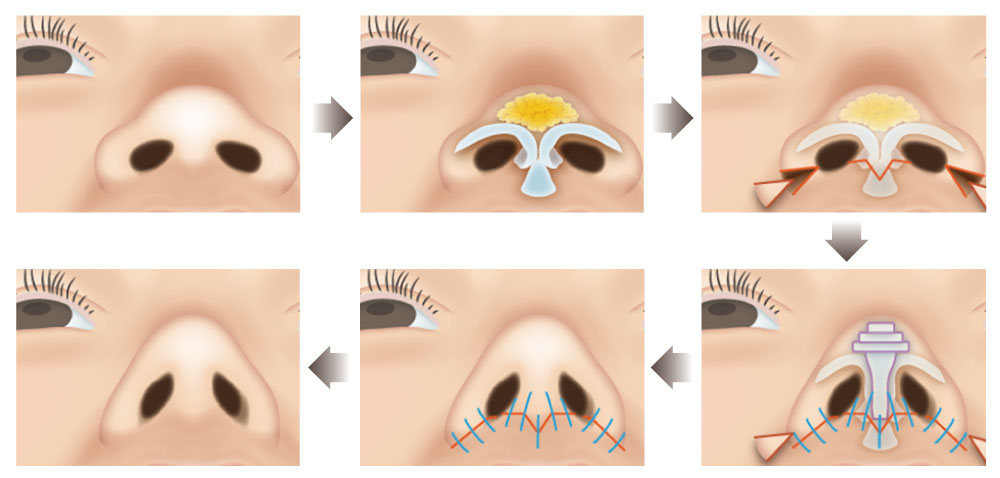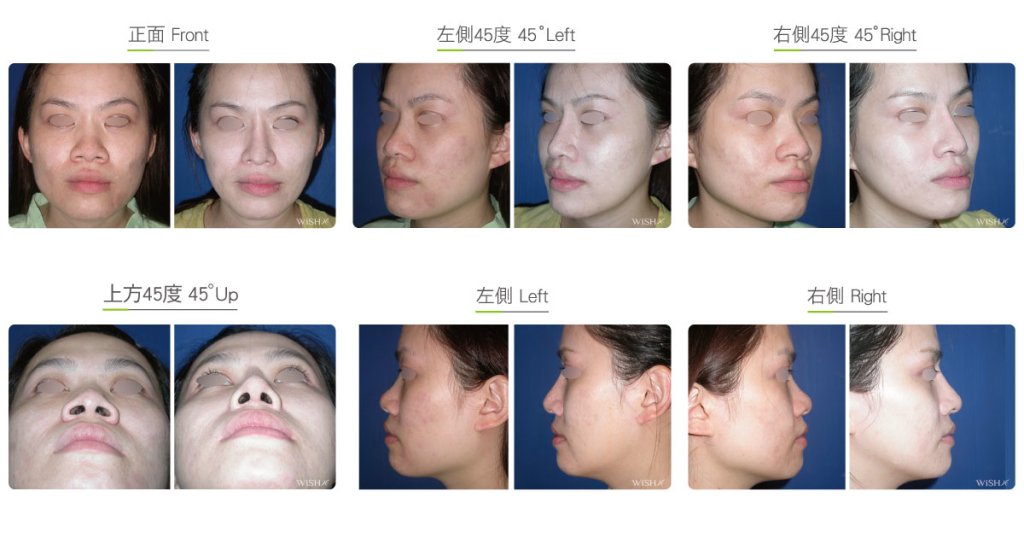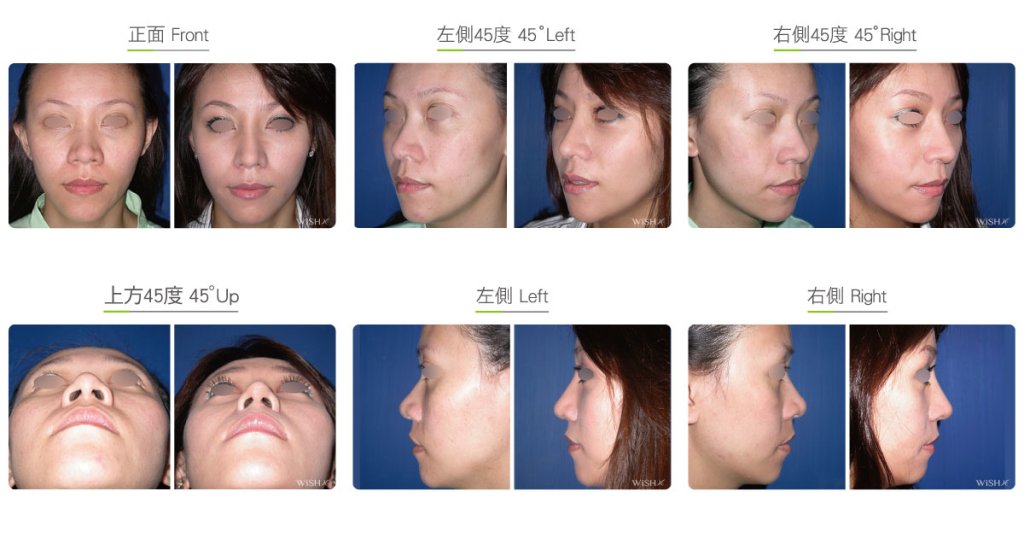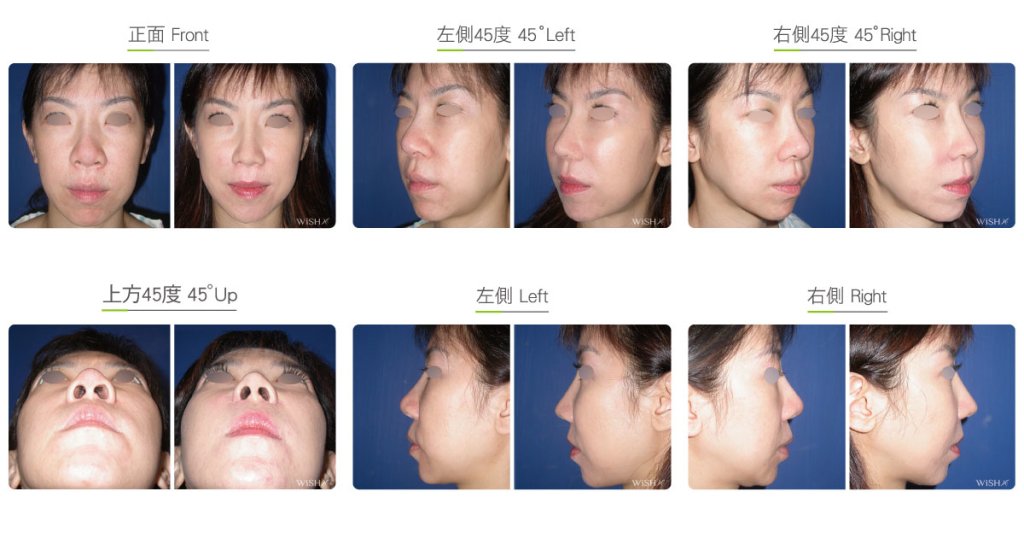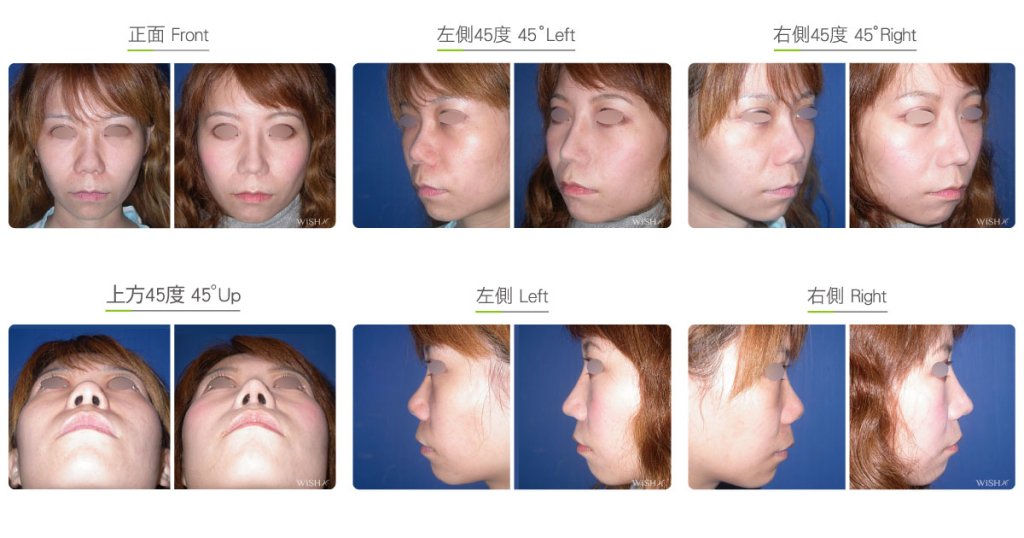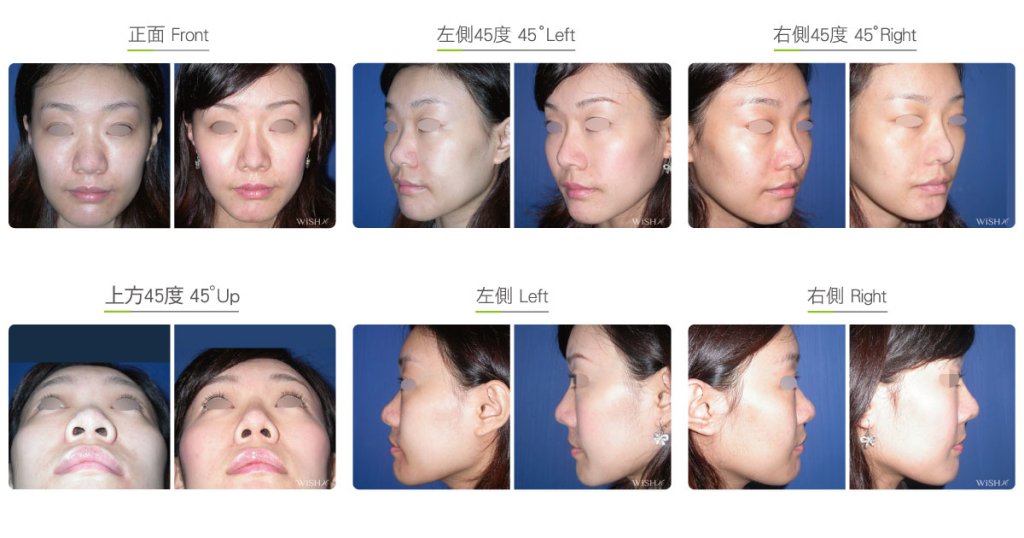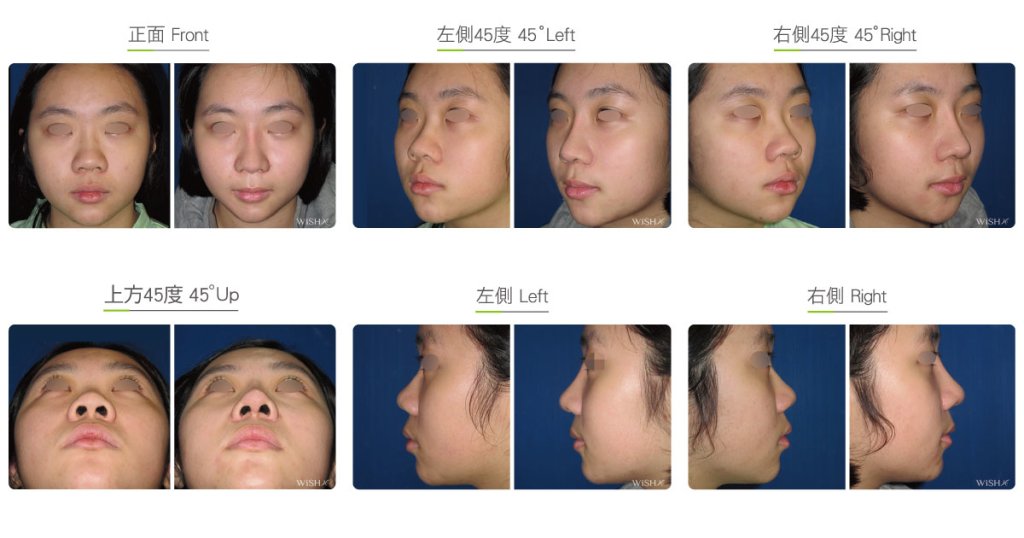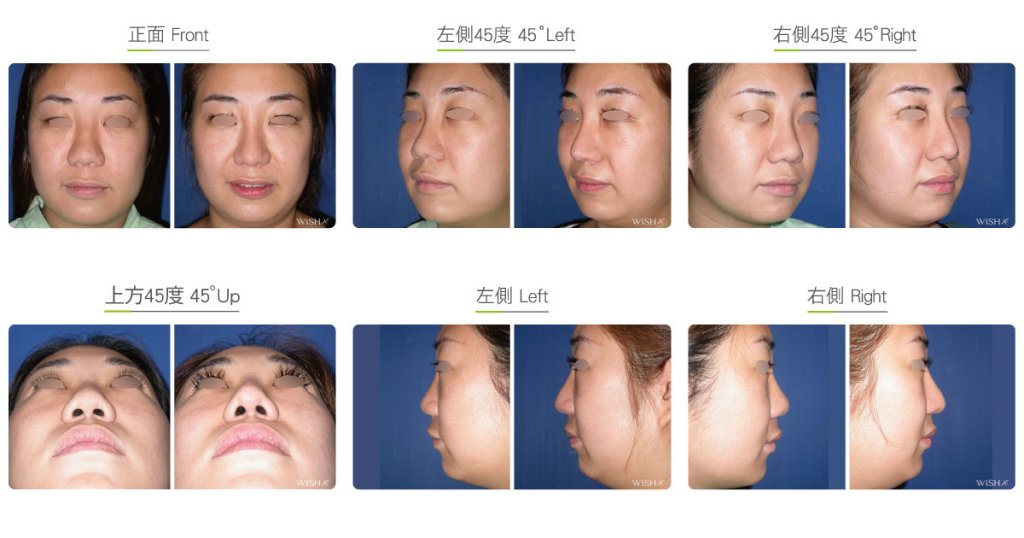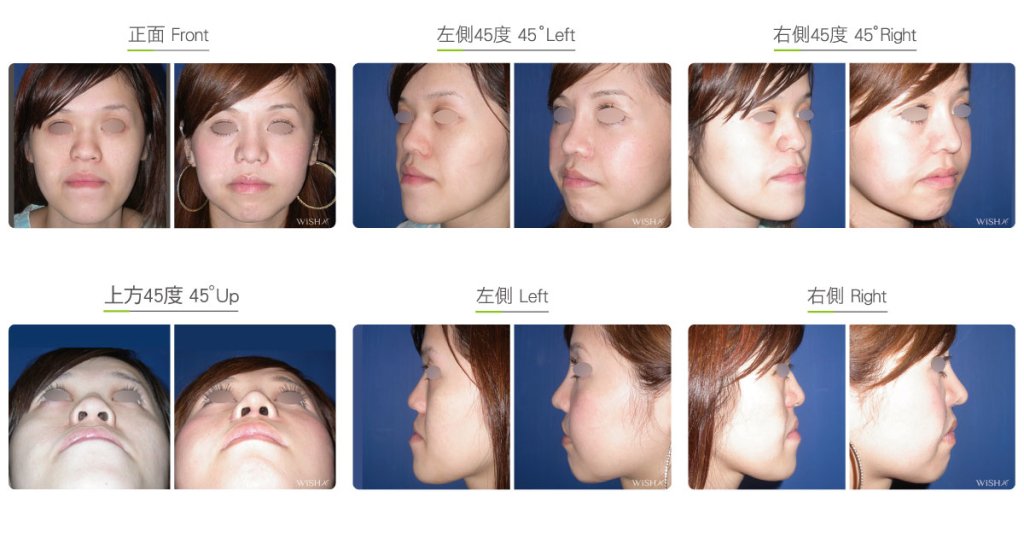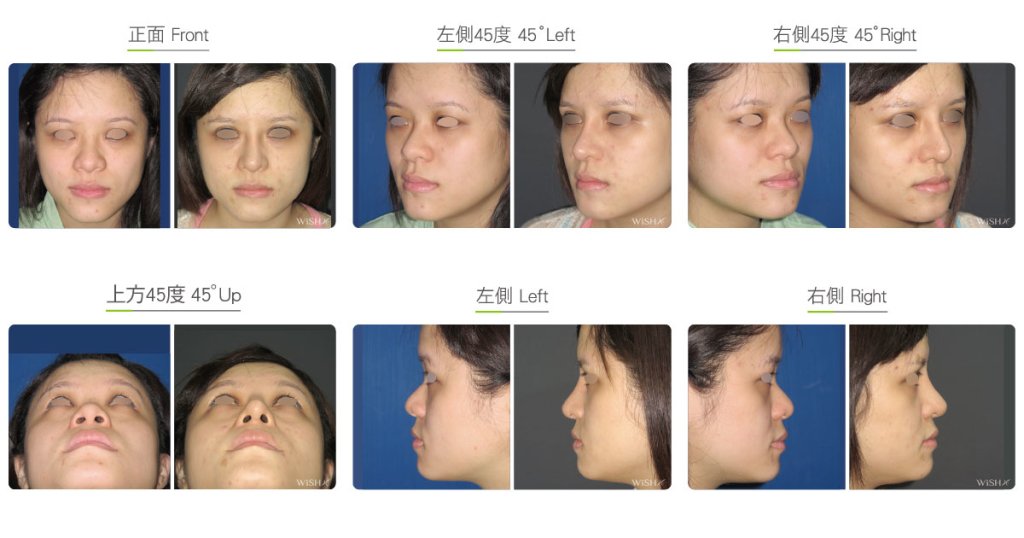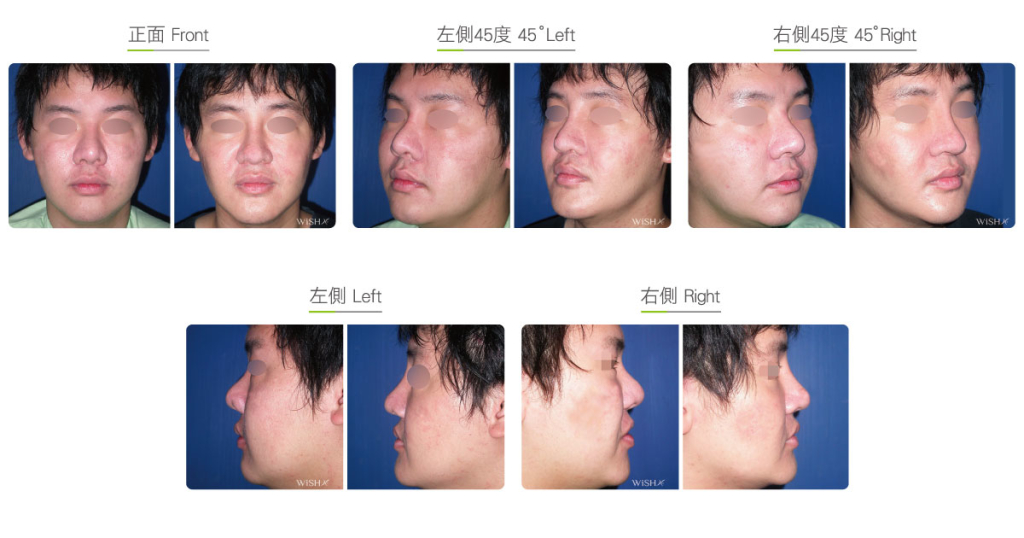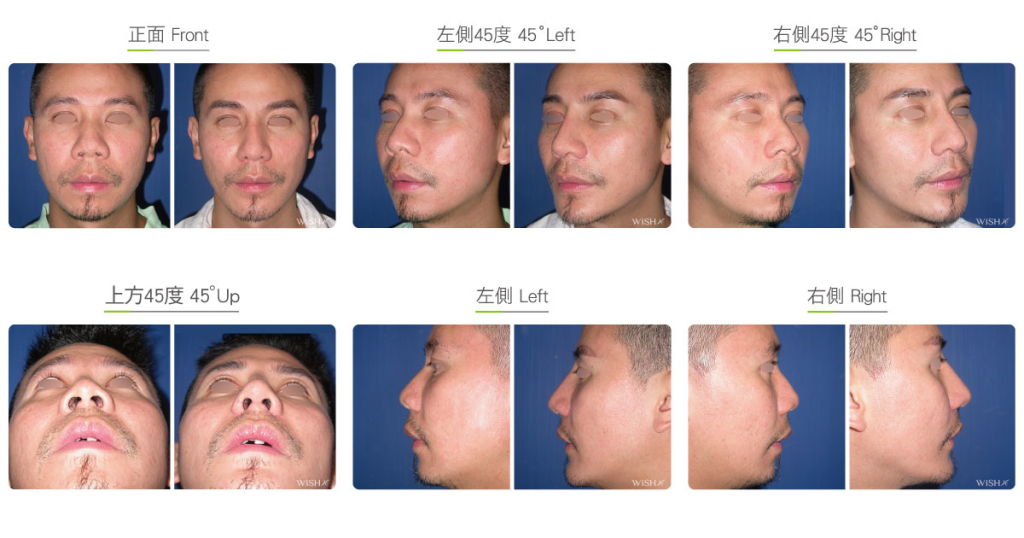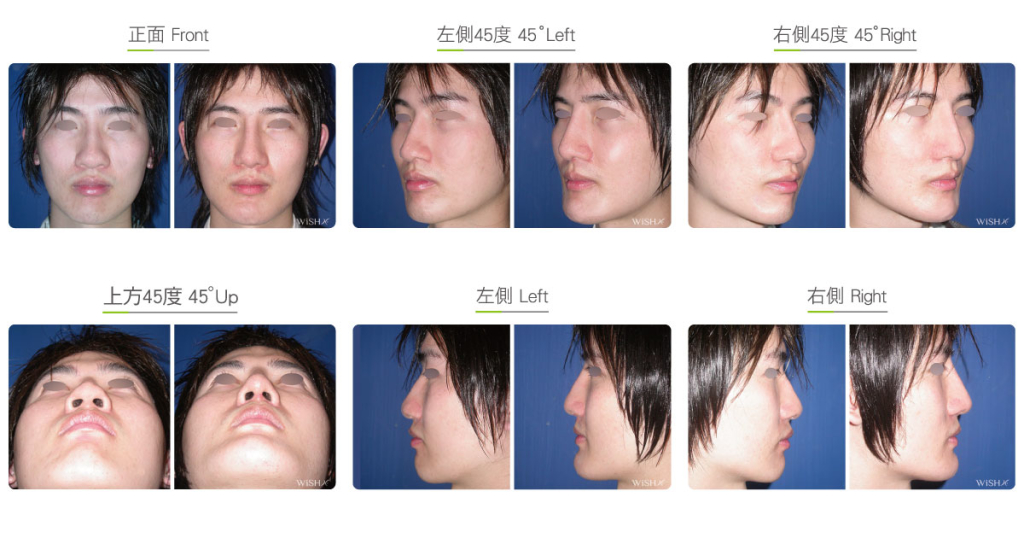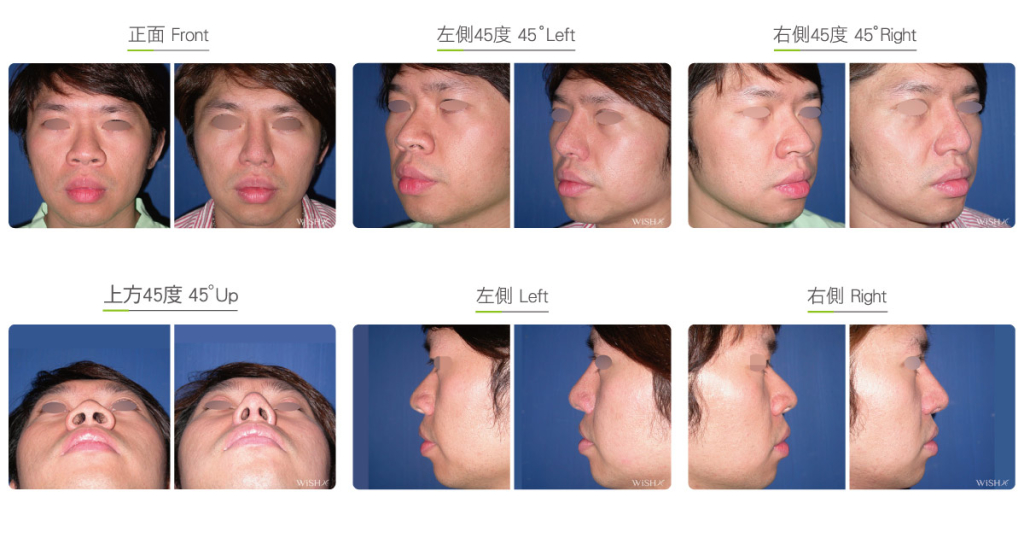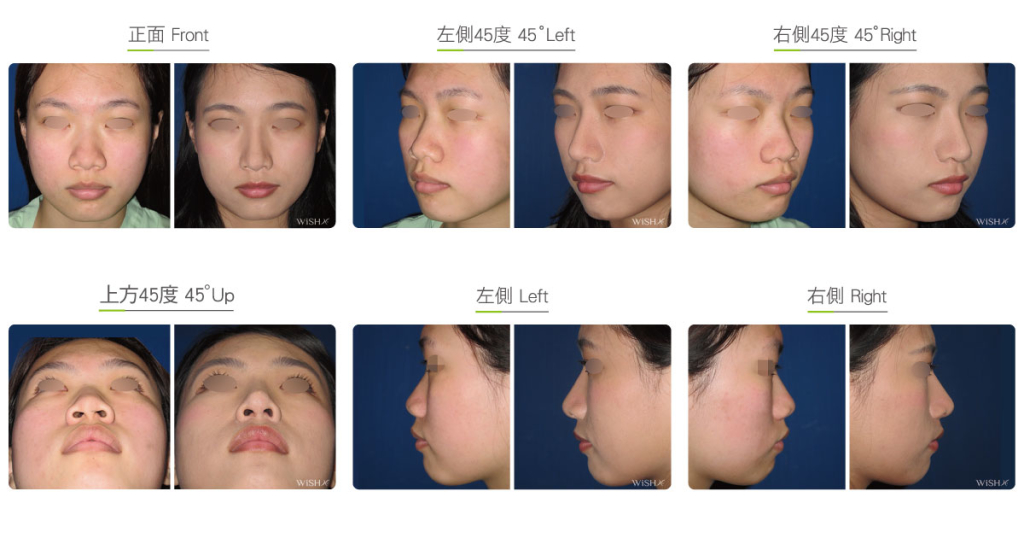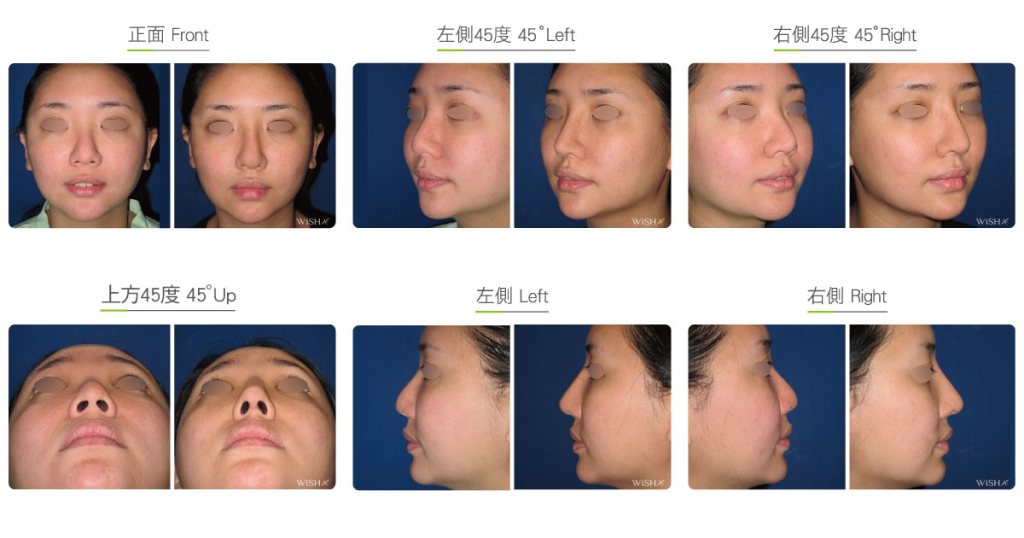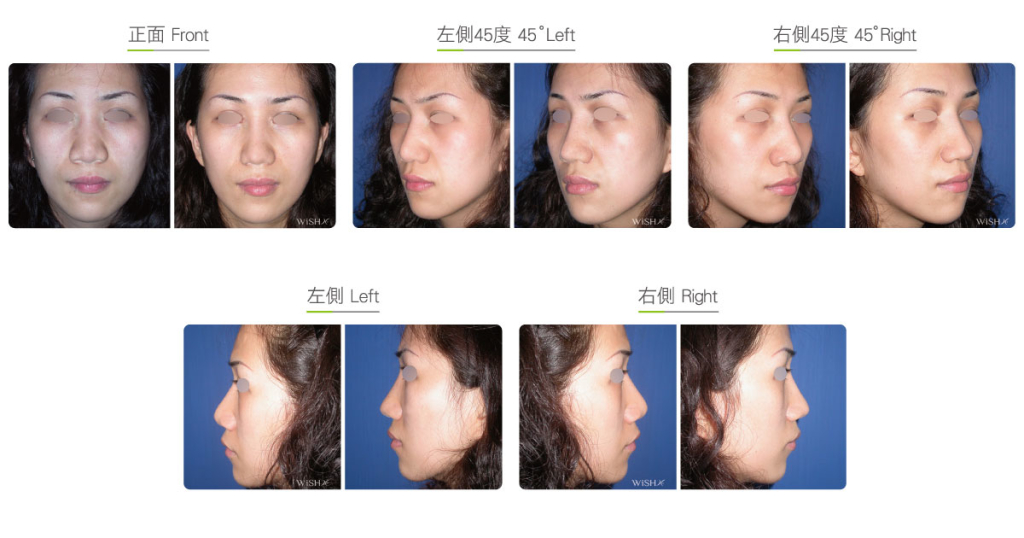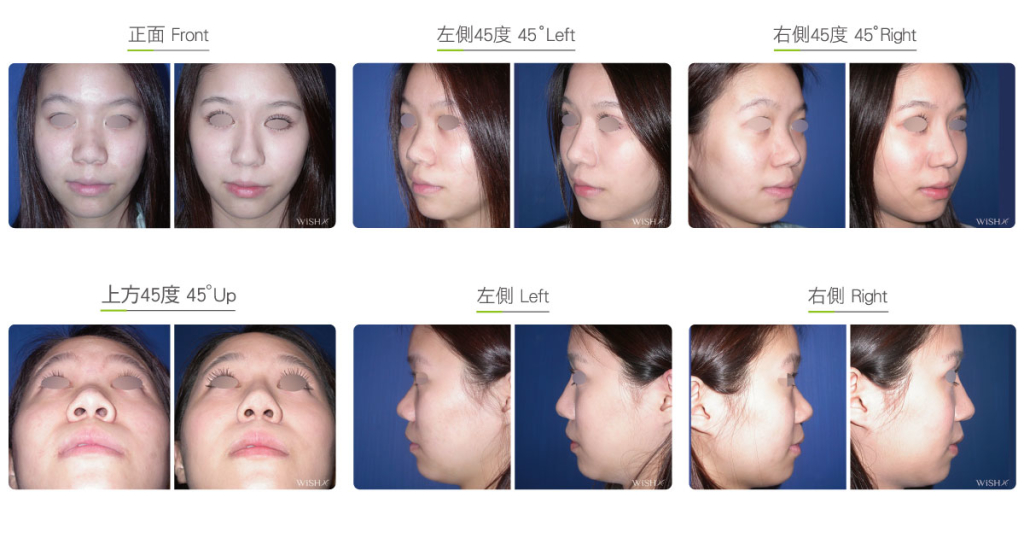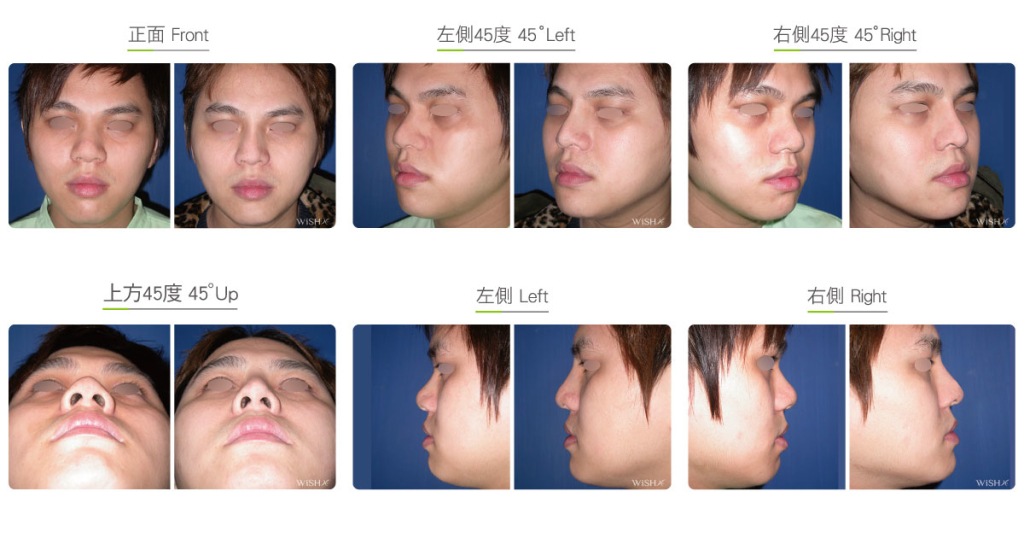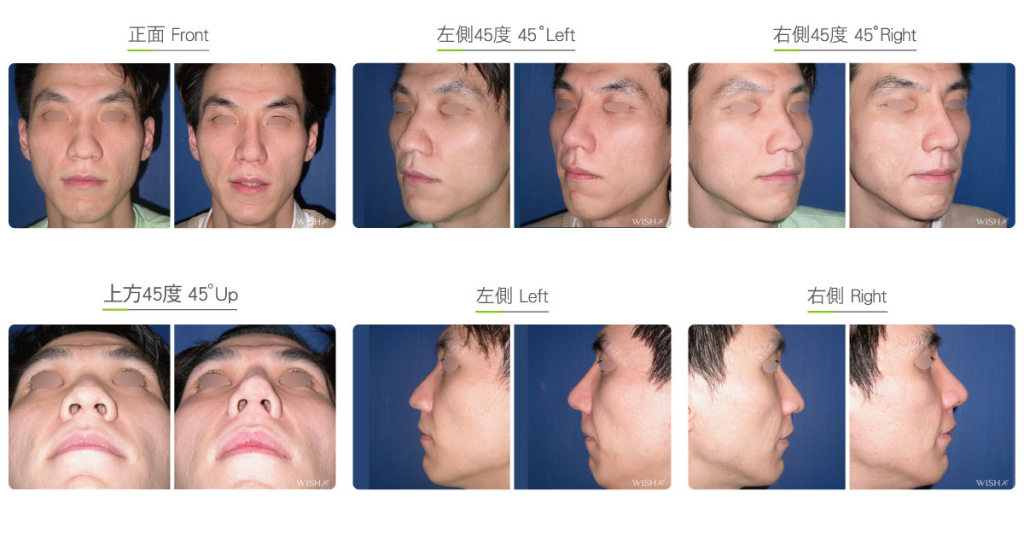Bulbous Nose Correction
A bulbous nose, also called a wax apple nose or fleshy nose, is characterized by a plump, round, and ill-defined nasal tip, which is disproportionate to the nasal bridge width and looks like a lollipop from the frontal view. This is mostly attributed to the hypertrophy of congenital skin and excess nasal fat or the concurrent flare of alar cartilage. Correction focuses on the partial trimming of the nasal tip skin and soft tissue and reduction of the alar cartilage. Nevertheless, based on Dr. Chuang’s experience in the management of a bulbous nose, mere thinning of the nasal tip fat renders indistinct results. A majority of patients will undergo open rhinoplasty, including the augmentation of the nasal bridge with a nasal implant, elongation of the nasal tip with autologous nasal septal cartilage, support of the marble-shaped nasal tip, removal of the nasal fat and soft tissue (thinning), or reduction of the ala nasi and nostrils, to obviously reconstruct the whole nose. However, because the nasal fat can only be partially removed, patients should not blindly demand an exceedingly small tip. Otherwise, an excess removal of the nasal fat will result in nasal tip skin atrophy or redness and thinning, thus undermining the surgical results and naturalness. Moreover, some patients with scarring are predisposed to intranasal scar proliferation after the operation, leading to secondary hypertrophy of the nasal tip. If necessary, intra-nasal steroid injections to remove scars are administered for the treatment and control of scarring.
Additionally, a bulbous nose is associated with the width of the nasal bridge in some cases. Patients with a flared nasal tip due to an exceedingly wide bridge should consider concurrent nasal bone reduction (lateral osteotomy) to reduce the nasal bridge for attaining multiple results of nasal tip reduction.
Surgical conditions
Duration
- Type of anesthesia: IV sedation + local anesthesia or general anesthesia
- Surgical incision: At the bottom of the nasal columella and inside the bilateral nostrils
- Recovery: 5–7 days
- Removal of stitches: 7 days
General instructions
No food and water on the day of surgery
- Wear a tape or nasal splint for 1 week postoperatively to stabilize the nasal bridge.
- Avoid smoking and alcohol and impacts to the nasal tip for 3 months postoperatively, and clean the intranasal wound in the morning and evening every day.
- Abstain from eating raw food, seafood, and irritating food or spices for 3 months postoperatively.
- Avoid exposure of the nostrils to dirty water (sea water, swimming pool or sauna water, and hot springs) and close contact with pets and dust mites for 3 months postoperatively.
- In case of symptoms of flu after the operation, please visit a doctor immediately.
Ideal candidates
- Patients with congenital hypertrophy of the nasal tip like a bulb
- Those with hypertrophic nasal tip skin such as a bulbous nose or rosacea
- Those with a disproportionate nasal tip or nostril and nasal bridge
- Those who desire optimal nose reduction or rhinoplasty results
Potential complications
- Scarring
- Nasal fat proliferation
- Nnasal tip atrophy
- Nasal tip redness or white spots
- Incomplete correction
Surgical advantages
-
It is able to remold the angle and shape of the nasal tip and correct the original tip hypertrophy.
-
It is able to reduce the volume and size of the nasal tip for making the nasal bridge and nasal tip compatible.
-
It is able to partially correct the large pores at the nasal tip.
-
It is a critical step in the remolding of a delicate nose.
Surgical drawbacks
-
There might still be secondary proliferation and hypertrophy of the nasal fat.
-
Without concurrent open rhinoplasty, the surgical results might be below expectation.
-
Excess thinning of the nasal fat may lead to nasal tip atrophy or skin hyper-sensitivity.

